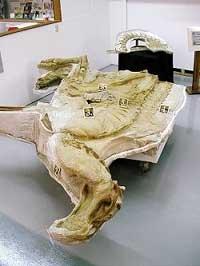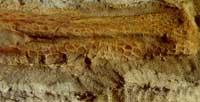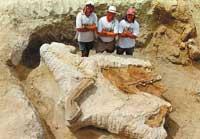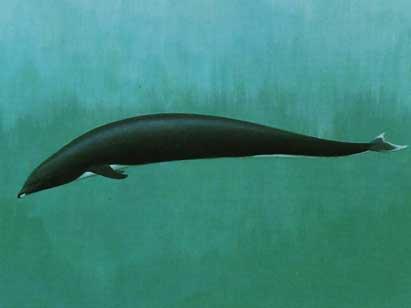The best kept secrets of dinosaurs
2002/10/21 Orobengoa, Olatz - Elhuyar Zientziaren Komunikazioa

The dinosaur is an individual of the species Brachylophosaurus canadensis, of the group of hadrosaurs. The hadrosaurs were herbivores and, having the end in the form of duck beak, they are also known as chopped dinosaurs.
According to experts, the discovered braquilofosaur died 77 million years ago in the late Cretaceous and was 4 years old when he died. Numerous details of the animal's body have been found: skin, beak, fingernails and viscera. In addition, they have been able to know the last food that the animal ate: conifers, ferns and another plant similar to magnolium. More than 40 plant species have been identified in the plant remains found inside the stomach and around the body.

Around the world there are only three other fossils of the genus Brachylophosaurus, and with all the data given by the latter, paleontologists will be able to know a lot about the species. For example, although hadrosaurs were previously thought to be bipedal, the strong shoulder muscles found in this number indicate that they were on four legs.
Fossils containing soft tissue remains are very rare, so experts consider this case very special. They say that this valuable fossil has only been achieved due to the concurrence of many atypical factors.

Gai honi buruzko eduki gehiago
Elhuyarrek garatutako teknologia





